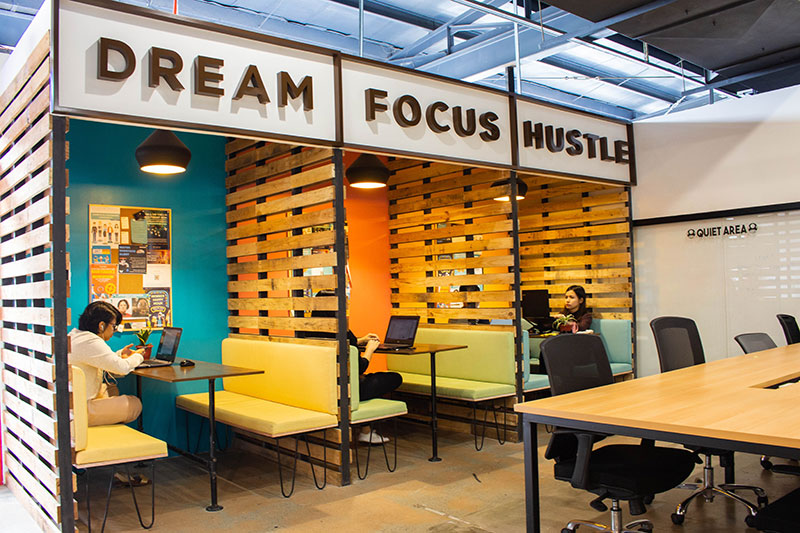Flextime can be as convenient as waking up, turning on your laptop/desktop, and clocking in for work. You can even wear your sleep clothes while having a zoom meeting with your workmates; they wouldn’t know what you’re wearing below.
Most workers must work 8 hours daily on a strict fixed work schedule. Some may struggle to commute to the office, get stuck in traffic, and be on time to clock into work. Not to mention the additional energy you have to exert in waking up early, preparing your work clothes, and everything in between to get to work on time. But this is where flexible work arrangements or flextime eliminates the struggles of the traditional 9-to-5 fixed work schedule.
So, Is Flextime Better?
Yes, but it depends. Read further to learn why.
Table of Contents
What is Flextime
Advantages of Flextime
Disadvantages of Flextime
What is a Fixed Work Schedule
Advantages of Fixed Work Schedule
Disadvantages of Fixed Work Schedule
Best Practices for Efficient Flextime Work Organizations
The Middle Ground for Flextime and Fixed Work Schedule
How to Enable Hybrid Flexible Work for Your Organization?
So, what’s better?
What is Flextime

Flextime, also known as flexi-time, flexible work, or sometimes applicable to hybrid work, is a type of work arrangement in an organization that allows employees to adjust the time their employees decide to start and finish work. As long as they complete the 8 hours a day work schedule, are present during core work hours, and don’t get in the way of essential work agendas for the day.
Flextime has been around the block for some time. Still, it is breaking ground for others since, until the recent pandemic, most business industries had no choice but to adapt to work from home.
Flextime isn’t just limited to going to the office with the ability to adjust your working hours. This flexibility of work schedule allows employees to tend to more critical aspects of their life besides work, such as family responsibilities, hobbies, or any personal engagements. It also opens the benefits and opportunities for organizations to opt to work from home arrangements for a better option for their workforce.
Advantages of Flextime:
Avoid Traffic and Rush Hours
Implementing a flextime work arrangement allows you to save yourself from stressing out if you’re going to be late for work. It provides a proper balance of efficiency without worrying about salary deductions for tardiness. On average, most working hours start from 7:00 am to 9:00 am, and you should be ready to leave your home around 6:00 am to 7:30 am; also, it depends on various circumstances like what time traffic starts to build up and travel time from your home to the office. You will probably be fighting along with the tides of traffic on the way to work while stuck between rush hours. It would be too tiring to wake up at 4:00 am, arrive at the office at 5:00 am, wait until your office opens, and clock in for your 7:00 am shift.
Employee Attraction and Retention
After employees had a taste of working from home during the pandemic, studies have shown an increased demand for flexible work arrangements, considered a top priority for 92% of millennials. Other research shows that 55% of employees stated that the flexibility of work and the work-life balance are essential to their job satisfaction. Having a flextime work schedule is also one of the cheapest ways to benefit and compensate your employees, provide them with the best possible working experience, and achieve employee attraction and retention.
Work-Life Balance
As the study stated above, flexible work arrangement is a top priority for most millennials looking for a job today. While adjusting your working hours also enables you to set an actual amount of work and personal time balance. Let’s say that your usual work schedule is from 9:00 am to 5:00 pm, but you have to pick up your kids from school at 5:00 pm; you can go to work one hour earlier, so you are on time when you pick up your kids and preventing them from experiencing trauma when you didn’t show at the expected time. Another example is if you lack sleep the night before work, you can adjust one hour to your work hours to catch a good amount of sleep while being productive and efficient at work.
Opportunity to Work from Anywhere
Some flextime work schedules come with the benefit of working remotely. The good thing about it is that as long as you have sufficient equipment for a work-from-home setup like a Desktop PC or laptop, a reliable internet connection, and a suitable workspace at home, you can be eligible to work from home. Another option is, if you want to have a change of work scenery or you are simply tired from being stuck in your home office, you can go to a café or, most preferably, a coworking space. So, you won’t have to be forced to drown yourself in caffeine to make up for the 8 hours of stay in a coffee shop. You can even go further! You can visit your loved one’s miles away from your city if you can access all the work equipment you need to do your workloads and communicate with your team.
Allows School, College and Work Schedules to Fit
Having a flextime work schedule can be beneficial even outside work. It provides a great workaround to your plan allowing you to be efficient and productive with your daily responsibilities. The luxury of having flexible working hours opens an opportunity for you to expand your knowledge and learning. The chance to aim for higher educational attainment, like studying for a master’s or a doctorate, attending business seminars, and attending online courses for your career development, is doable. Or, if you plan on simply crawling through college while looking to jumpstart your career, then having a flexible work schedule is a luxury for most millennials.
Disadvantages of Flextime:
Poor Time Management
The flexibility of the work schedule allows you to piece in any engagements or appointments within a time frame, which can provide a short-time convenience, especially if you have a packed schedule. But with persistent and chronic fill-in gaps in the work schedule, we become complacent with our daily and weekly schedules, which can cause poor time management or even overwhelm your daily responsibilities.
Poor Interpersonal Relationships with Workmates
With everyone in the organization opting for flexible work hours, there would be days when everyone doesn’t go to work simultaneously in a time frame. Everyone could be working at their peak hours, and you’re still on your way to work, which gives you little time to disturb and have quick chitchat with your workmates since it would be gruesome to interrupt while at their work momentum. A lunch break would be the ideal time to disturb your dear coworkers, but since you won’t be in line with their work schedule, you might get a little behind with your workmates and might even miss out on the fun of socializing and mingling with them.
Team Coordination Can Be Challenging
Managing a team with a flextime schedule can be a little tricky. If there’s an urgent workload that needs to be finished within an hour and you need the help of a coworker that goes to work a little later than you, it would be challenging to submit the work since there will be missing portions from your coworker. Without core working hours – when you all work at your peak at a certain period of the day, it would be challenging to manage a team that doesn’t function during the same time frame.
What is a Fixed Work Schedule

Your alarm goes off, and you are struggling to wake yourself up. You set up an extra 5 minutes to your alarm clock before getting off the bed. You go downstairs to eat. You shower. You dress up. Then leave for work. Get stuck in traffic; you stress a little since you might be late. Arrive at your office and clock in just in the nick of time. Take a seat in your office cubicle, and leave for work. Commute again. And do the following routine throughout the week.
A fixed work schedule is incorporated with a set amount of work hours that employees have to go to report for work and the time they leave for work. For example, a classic 9 am to 5 pm work arrangement is considered a fixed work schedule. A fixed work schedule isn’t as bad as it sounds. It has its strengths and weaknesses that shine on its own.
Advantages of a Fixed Work Schedule:
Better Team Coordination
One of the strengths of having a fixed work schedule is the ability to work with coordination since everyone will most likely be going to work simultaneously, assuming everyone’s alarm popped off or no one got stuck in traffic. Relaying workload around the team, coordinating your team’s goals and agendas for the day, and discussing important matters as soon as possible create better team coordination in the organization.
More Interconnectedness
Being physically and mentally present in the workspace means more time and opportunity to form relationships in the workspace. Talking with your coworkers while working can lift the stress and ease the heavy workload, as long as no one is getting distracted and bothered. Deeply immersing yourself in the connectedness of working together as a team, back-and-forth conversations and brainstorming, and workplace synergy are healthy advantages of working in a fixed work schedule. Also, the excitement of getting lunch together and hanging out for dinner after work hours is a part of team building that solidifies that connection between you and your coworkers.
Lesser Burnouts
Going to the office and working together in a positive working environment with your workmates is one aid for stress and constant burnout. Collaborating in a workspace with coworkers sets your mind to focus and thrive on performing and working alongside your team. Exposure to multiple work environments prevents the likelihood of burnout.
No extra costs
When everyone goes to the office at the same time, everyone leaves the office at the same time, unless someone else in the office has to do overtime. It would be cheaper for the company or organization to run a fixed work schedule. The operational and utility costs won’t go overboard with the daily usage of office hours since they will only use a certain amount of time per day.
Disadvantages of a Fixed Work Schedule:
Recruitment Challenges
According to a study on employees and professionals, they are more inclined and attracted to have a flexible work arrangement, overtaking salary as an important factor in staying or getting a job. Employees are more likely to set work as their number one priority throughout the day and week. A fixed working schedule can limit the time that you can spend and fit in to drive your daily activities. Only getting to do their desired activities on the weekends makes them dissatisfied and feel restricted between work and life activities.
Increased Tardiness
Since a fixed work schedule requires you to go to work at a specific time, you can’t be late, even by a minute. An increase in tardiness is evident in most fixed work schedule organizations. Following a consistent routine of going to work and avoiding being tardy can be challenging for most workers. Not only that, but you also get a deduction from your salary every time you clock in for work late, making it a stressful way for you to start your work day.
Time Inefficiency
Preparing for and going home from work is time-consuming and lessens your time in a day. The amount of time and energy you have to exert before going to work and going home already takes up at least 2-3 hours a day, depending on where you live, mode of transportation, and commute time. With 2-3 hours poured into preparation and travel, you may utilize it efficiently like learning, going for life-fulfilling activities, dedicated hours for health such as exercise, skin-care routine, or can be as simple as taking a rest.
Is Flextime for All?
Flextime has a benefit for everyone that yearns for life besides work. It is the epitome of obtaining job satisfaction, work-life balance, and a sense of purpose for workers that don’t want to get their schedules flooded with work and become a labor slave to the corporate world. But flextime isn’t the best for both worlds in white and blue-collar industries. Every industry has its unique way of delivering outputs, operations, and workforce efficiency.
A corporate office job is more sensible to adapt to a flexible work arrangement since it only requires workers to produce a specific output within a day. But with blue-collar jobs, it is an entirely different story. If you are working on a shift-basis work, you would be required to go to work at a specific time. And if you are working in a job that requires a unit, such as a factory worker, on a construction site, a firefighter, or any team that operates as a unit, it would be inefficient to work under a flextime work schedule.
Best Practices for Efficient Flextime Work Organizations

Set Core Hours
Working together with workmates is an essential factor in building a strong workforce. One way to ensure workplace collaboration is setting a suitable time where your coworkers are fully engaged and immersed in their work agendas for the day. It develops peak hours in the workplace where everyone can ask for help, collaborate, focus on productivity blockers, and brainstorm synergetic ideas for your department.
Synergize
Synergy is more than just collaboration or sharing ideas, or working together. Synergy works together to form the creative and non-restrictive flow of ideas with mutual understanding, where everyone sees their coworkers with the same competency that allows creative coordination in your work department and provides excitement and passion for a developed and efficient work organization.
Effective Communication
Enforcing effective communication around your workforce promotes enhanced productivity and efficiency. Getting the right message across to your coworkers in order to develop and finish a plan, work goals, and objectives and formulating effective solutions can be a great way to reinforce a positive and efficient flextime organization.
Set a Meeting Day for Catching Up
Setting up a meeting day where everyone catches up in their department. A meeting where everyone talks about their finished work, what your team is currently working on, and the awareness within the department priorities sets an effective flextime work organization. You can choose Monday so you can talk about the prioritized agendas within the week or Friday to talk about what you’ve done and finished throughout the week.
The Middle Ground Between Flextime and Fixed Work Schedule

The good thing about the advancements in workspace solutions like coworking-served office spaces and even virtual offices is that it allows us to have a third alternative for most office jobs. These enable us to adapt and opt for hybrid and flexible work arrangements.
Hybrid and flexible work, hybrid-flex, or hyflex work arrangements combine working remotely and in the office with a flexible work schedule. Both advantages of flextime and a fixed work schedule minimize the disadvantages of both working arrangements. Hybrid flex work provides a third alternative to flextime and a fixed work schedule which may be adaptable to both work arrangements.
Going to the office 2 or 3 times a week for meetings and appointments while having the ability to work at home provides a combination of both working arrangements. Advantages like lesser burnouts, a higher essence of work-life balance, can avoid rush hours and traffic, team coordination, and such provide the perfect alternative. It also enforces the highest efficiency, productivity, and work satisfaction, with the opportunity to build stronger interpersonal relationships with your coworkers since it opens opportunities for brainstorming sessions in the office when needed.
How to Enable Hybrid Flexible Work for Your Organization?

Opting for a workspace solution for your team and organization enables hybrid and flexible work for everyone that a brick-and-mortar business organization can’t provide for its workers. Getting Coworking Space at Weremote can provide the best work experience with a collaborative and creative work atmosphere that enables hybrid flexible work arrangements since most coworking spaces, especially at Weremote, make office spaces flexible and accessible. Coworking spaces also offer a plug-and-play office desk setup in which all you need to bring is a laptop (or even a Desktop PC!), sit, and work at a hotdesk, allowing you to work comfortably without thinking of the hassle of setting up. A cup of coffee or tea is best for a day of grinding and work! Weremote has complimentary freshly brewed coffee, tea, and water for their coworkers.
So, what’s better?
Well, from a retrospective and general sense, a hybrid-flexible work schedule is the most enticing work arrangement of the three. A hybrid-flexible work schedule is just an elevated and better arrangement of flexible work schedules since the hybrid work model is just an addition to flextime. It also offers a combination of advantages with minimized disadvantages of both work arrangements while achieving a higher sense of work-life balance. But if you consider the condition of the work industry, the type and area of work, and accessibility, it would depend on the best and most effective kind of work arrangement. Some industries and businesses can benefit from staying to a fixed work schedule, and some can benefit from flextime.
Author Bio

Oliver Lewis
Founder & CEO

- Talenthero © 2023, All Rights Reserved.
